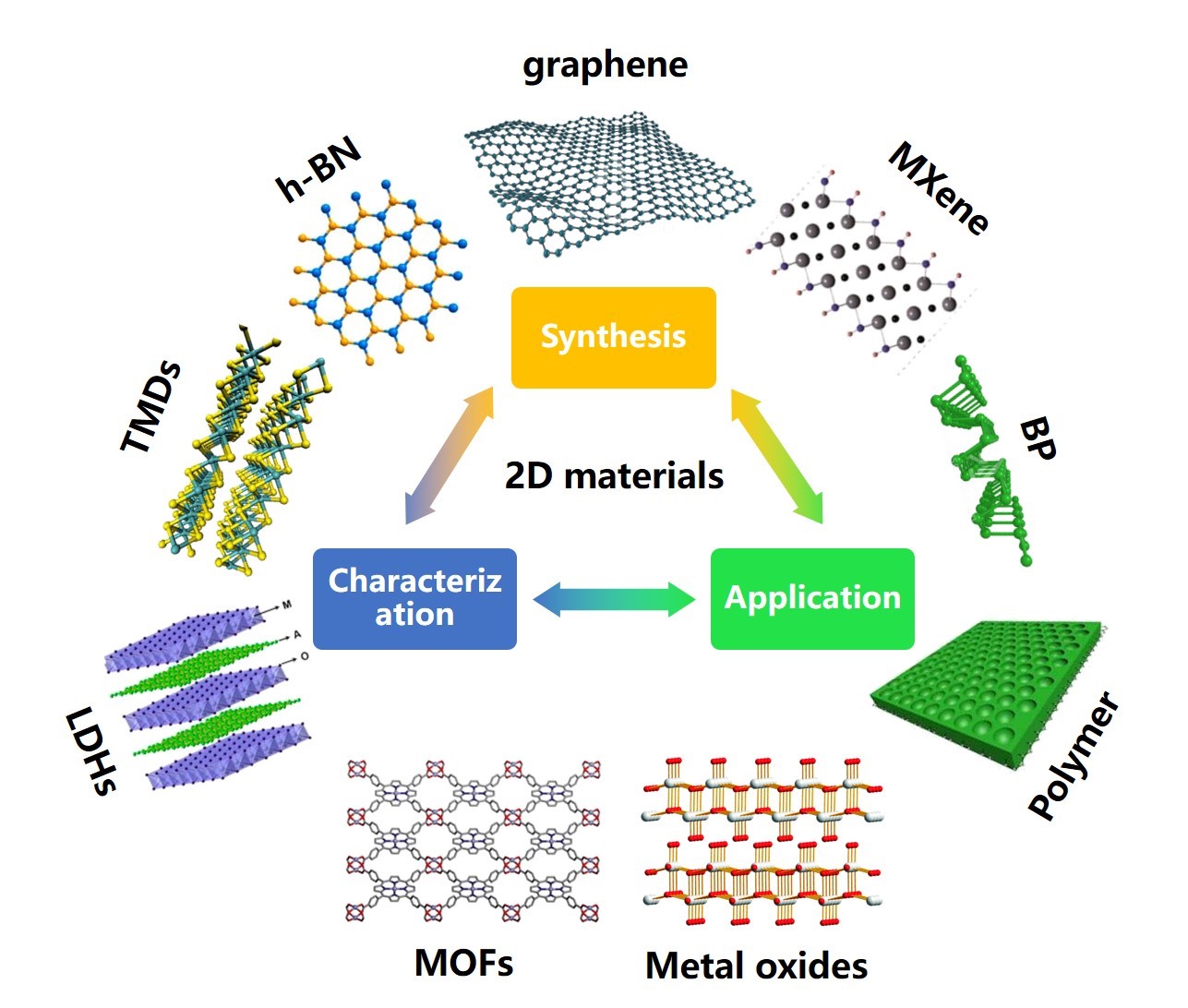Graphene and 2D materials are a very promising class of functional materials for the breakthrough electrochemical energy devices due to the unique layered structures and outstanding properties. However, synthesis, assembly and functionalization of graphene and 2D materials for fundamental understanding still remain great challenges. Therefore, the goal of our research is to design, synthesize, process, and assemble a brand new generation of graphene and 2D materials with exquisite control of chemical composition, structural morphology and physical dimension, to fundamentally characterize and investigate their chemical and physical properties, and to develop the novel interracially integrated functional materials with different compositions, structures or properties, and eventually to create multiple nano-energy systems with unprecedented performance beyond the limits of the current technologies.

To this end, we have developed the top-down and bottom-up approaches, such as liquid exfoliation, electrochemical exfoliation, CVD growth, epitaxial growth, template-assisted freeze-drying to successfully synthesize multifarious graphene materials, including graphene oxide with different sizes, electrochemically exfoliated graphene, vertically aligned graphene, graphene-based heterostructures, and single atom anchored on graphene, and further obtained diverse macroscopical assemblies of 0 D microspheres, 1D fibers, 2D films and 3D networks, which provides an novel material platform for construction of high-performance energy storage and conversion devices.



Aside from graphene, other 2D materials possessing different elemental compositions and crystallographic structures offer endless possibility to obtain new materials with distinctive physical and chemical properties, indicating great prospect in energy storage and conversion applications. Based on this, various 2D materials, including MXene, phosphorene, h-BN, metal oxides, metal nitrides, and conductive polymers with controlled size, morphology and well-defined porous structure, as well as and their derived nanostructures have been developed and researched to continuously extend understanding about this class of novel material families.

Selected Publications
Bottom-up fabrication of sulfur-doped graphene films derived from sulfur-annulated nanographene for ultrahigh volumetric capacitance micro-supercapacitors. J. Am. Chem. Soc. 2017, 139, 4506-4512.
Ti3C2 MXene-derived sodium/potassium titanate nanoribbons for high-performance sodium/potassium ion batteries with enhanced capacities. ACS Nano 2017, 11, 4792-4800.
Alkalized Ti3C2 MXene nanoribbons with expanded interlayer spacing for high-capacity sodium and potassium ion batteries. Nano Energy 2017, 40, 1-8.
Electrochemically scalable production of fluorine-modified graphene for flexible and high-energy ionogel-based microsupercapacitors. J. Am. Chem. Soc. 2018, 140, 8198-8205.
General interfacial self-assembly engineering for patterning two-dimensional polymers with cylindrical mesopores on graphene. Angew. Chem. Int. Ed. 2019, 58, 10173-10178.
Hierarchical ordered dual-mesoporous polypyrrole/graphene nanosheets as bi-functional active materials for high-performance planar integrated system of micro-supercapacitor and gas sensor. Adv. Funct. Mater. 2020, 1909756.
2D amorphous V2O5/graphene heterostructures for high-safety aqueous Zn-ion batteries with unprecedented capacity and ultrahigh rate capability. Adv. Energy Mater. 2020, 2000081.